Casio Edifice EQW-A1000DB-1AER Handleiding
Bekijk gratis de handleiding van Casio Edifice EQW-A1000DB-1AER (12 pagina’s), behorend tot de categorie Horloge. Deze gids werd als nuttig beoordeeld door 58 mensen en kreeg gemiddeld 4.8 sterren uit 29.5 reviews. Heb je een vraag over Casio Edifice EQW-A1000DB-1AER of wil je andere gebruikers van dit product iets vragen? Stel een vraag
Pagina 1/12

Operation Guide 5142
E-9
While crown button mode switching is disabled, pressing the crown button will x
cause the
x
x
x
xx
to move to the 3 o’clock position. The Second Hand
x
x
x
xx
Second Hand
will resume normal timekeeping when you release the crown button.
To re-enable crown button mode switching
Hold down the crown button as you press .A
E-8
Note
If you do not perform any operation for more than three minutes after pulling out the x
crown, crown operations will become disabled automatically. If this happens, push
the crown back in and then pull it out again to re-enable crown operations.
Disabling Crown Button Mode Switching
You can use the following operation to disable crown button mode switching.
This helps to prevent accidental mode changes while wearing the watch.
To disable crown button mode switching
Hold down the crown button for at least two seconds until the watch beeps and 1.
then press .A
At this time the x
x
x
x
xx
will move to the 3 o’clock position.Second Hand
Release both buttons.2.
The watch will return to normal timekeeping. x
E-7
Note
You can use high-speed hand movement when confi guring time settings in the x
Timekeeping Mode, Alarm Mode, or Countdown Timer Mode, or when adjusting the
home positions of the hands.
Pushing the Crown In
Carefully press the button of the crown the push the crown back in.
Important!
To prevent unintentional operation, the button press operation of the crown x
becomes disabled automatically for about eight seconds after you push the crown
back in. It will become re-enabled after about eight seconds.
E-6
High-speed 1
With the crown pulled out, rotate it rapidly away from you two times.
High-speed 2
After starting the High-speed 1 operation, rotate the crown rapidly
away from you two more times.
High-speed Cancel
Rotate the crown towards you or press any button.
E-5
Pulling the Crown Out
After unlocking the crown, grasp the ring and pull the crown out.
Rotating the Crown
With the crown pulled out, grasp the ring and rotate the crown
towards you to move the hands of the watch.
You can also perform high-speed hand movement using the
operations described below. Note that there are two levels of high-
speed movement (High-speed 2 is faster).
Use High-speed 2 when changing the minute hand setting in the x
Timekeeping Mode, Timer Mode, and Alarm Mode.
E-4
Note that rotating the ring without pushing it down as far as it will go will change the x
settings of the watch. When locking the crown, be sure to press down fi rmly on the
ring as you rotate it.
Unlocking the Crown
Rotate the ring part of the crown towards you until it loosens
completely.
Pressing the Crown Button
You can press the crown button while the crown is locked.
Crown ring
Press
E-3
Using the Crown
The crown of this watch has a button part and a ring part. You can use the crown’s
button and ring to perform a number of different crown operations.
Locking the Crown
To lock the crown, push down its ring part as far as it will go as you
rotate the ring away from you until it is relatively tight. While the
crown is locked correctly, the only crown operations possible are
pressing the crown button and unlocking the crown.
Important!
Push down on the ring as you slowly rotate it. You should be able to feel it screwing x
securely into place.
You should normally have the crown locked during normal daily use. Leaving the x
crown unlocked creates the risk of unintended operations or even damage due to
impact.
E-2
About This Manual
In this manual, operations are performed using the watch’s
crown, and the three buttons indicated by the letters , A
B C and .
Hands and Indicators
z
z
z
z z
Hour Hand
x
x
x
x x
Second Hand
c
c
c
c c
Minute Hand
v
v
v
v v
Mode Disk: Rotates to indicate the current mode and
other information.
b
b
b
b b
Chronograph Signal
n
n
n
n n
Day
This User’s Guide uses numbers shown above to identify
watch hands and indicators.
+
+
+
++
6
6
6
66
*
*
*
**
>
>
>
>>
@
@
@
@@
B
B
B
BB
E-1
ENGLISH
Congratulations upon your selection of this CASIO watch.
Note that the product illustrations in this manual are intended for reference only, and so x
the actual product may appear somewhat different than depicted by an illustration.
This watch does not have a city code that corresponds to the UTC offset of –3.5
hours. Because of this, the radio-controlled atomic timekeeping function will not
display the correct time for Newfoundland, Canada.
Note that CASIO COMPUTER CO., LTD. assumes no responsibility for any
damage or loss suffered by you or any third party arising through the use of this
product or its malfunction.
MA1203-EB

Operation Guide 5142
E-19
Level Hand Movement Function Status
1 Normal. All functions enabled
2x
x
x
x
x
moves at two-second intervals.Second Hand
n
n
n
n
n
changes to (home position).Day 1
Beeper, time calibration signal
reception, and countdown timer
operation disabled
3
x
x
x
x
x
stopped.Second Hand
z
z
z
z
z c and Hour Hand
c
c
c
c
stopped at Minute Hand
12 o’clock. All functions disabled
When power drops to Level 3, all functions will be disabled but the watch will x
continue to keep time internally for about one week. If you recharge the battery
suffi ciently during this period, the analog hands will move automatically to the
correct setting and regular timekeeping will resume. After one week, all settings
(including timekeeping) will be cleared. Recharging the battery will reset all settings
to their initial factory defaults.
E-18
Power Levels
You can get an idea of the watch’s power level by
observing the movement of the
x
x
x
xx
in the Second Hand
Timekeeping Mode.
If the x
x
x
x
xx
is moving normally at one-second Second Hand
intervals, power is at Level 1.
If the x
x
x
x
xx
is moving at two-second intervals, Second Hand
power is at Level 2, which is quite low. Expose the watch
to light as soon as possible so it can charge.
Moves at two-second
intervals.
+
+
+
++
6
6
6
66
@
@
@
@@
B
B
B
BB
E-17
Warning!
Leaving the watch in bright light for charging can cause it to become quite hot.
Take care when handling the watch to avoid burn injury. The watch can become
particularly hot when exposed to the following conditions for long periods.
On the dashboard of a car parked in direct sunlight x
Too close to an incandescent lamp x
Under direct sunlight x
Important!
Keep the watch in an area normally exposed to bright light when storing it for long x
periods. This helps to ensure that power does not run down.
Storing the watch for long periods in an area where there is no light or wearing it in x
such a way that it is blocked from exposure to light can cause power to run down.
Make sure that the watch is exposed to bright light whenever possible.
E-16
Charging the Watch
The face of the watch is a solar panel that generates power from light. The generated
power charges a built-in rechargeable battery, which powers watch operations. The
watch charges whenever it is exposed to light.
Charging Guide
Whenever you are not
wearing the watch, be sure
to leave it in a location
where it is exposed to light.
Best charging x
performance is achieved
by exposing the watch to
light that is as strong as
possible.
When wearing the watch,
makes sure that its face is
not blocked from light by the
sleeve of your clothing.
The watch may enter a x
sleep state (page E-22) if
its face is blocked by your
sleeve even only partially.
E-15
E-82 To stop the alarm
E-83 Checking the Current Time in a Different Time Zone
E-84 To view the time in another time zone
E-86 To check whether a time zone is AM or PM
E-86 To specify standard time or daylight saving time (DST) for a city
E-88 Adjusting Home Positions
E-89 To adjust home positions
E-93 Troubleshooting
E-105 Specifi cations
E-14
E-65 To perform an elapsed time operation
E-65 To pause at a split time
E-69 Using the Stopwatch (Stopwatch lap mode)
E-70 To enter and exit the Stopwatch Lap Mode
E-71 To perform an elapsed time operation
E-71 To perform lap time measurement
E-72 To recall lap data
E-73 Using the Countdown Timer
E-74 To specify the countdown start time
E-76 To perform a countdown timer operation
E-77 To stop the alarm
E-78 Using the Alarm
E-79 To change the alarm time setting
E-82 To check the AM/PM setting of the alarm
E-82 To turn the alarm on or off
E-13
E-40 To determine the watch’s current mode
E-40 To return to the Timekeeping Mode from any other mode
E-41 To select a mode
E-44 Timekeeping
E-45 Confi guring Home City Settings
E-45 To confi gure Home City settings
E-51 To toggle the Home City time between standard time and daylight
saving time
E-53 To manually override a time calibration standard time/daylight saving
time setting
E-55 Confi guring Current Time and Date Settings Manually
E-55 To change the current time setting manually
E-59 To change the current date setting manually
E-63 Using the Stopwatch (Stopwatch Split Mode)
E-65 To perform elapsed time measurement
E-12
Contents
E-2 About This Manual
E-3 Using the Crown
E-8 To disable crown button mode switching
E-9 To re-enable crown button mode switching
E-10 Things to check before using the watch
E-16 Charging the Watch
E-23 To recover from the sleep state
E-24 Radio Controlled Atomic Timekeeping
E-30 To get ready for a receive operation
E-33 To perform manual receive
E-35 To check the result of the latest receive operation
E-37 Mode Reference Guide
E-11
2. Check the Home City and the daylight saving time (DST) settings.
Use the procedure under “To confi gure Home City settings” (page E-45) to confi gure
your Home City and daylight saving time settings.
Important!
Proper time calibration signal reception depends on correct Home City, time, and
date settings in the Timekeeping Mode. Make sure you confi gure these settings
correctly.
3. Set the current time.
xTo set the time using a time calibration signal
See “To get ready for a receive operation” (page E-30).
xTo set the time manually
See “Confi guring Current Time and Date Settings Manually” (page E-55).
The watch is now ready for use.
For details about the watch’s radio controlled timekeeping feature, see “Radio x
Controlled Atomic Timekeeping” (page E-24).
E-10
Things to check before using the watch
1. Press and hold the crown button (without unlocking the crown) for at
least two seconds to enter the Timekeeping Mode, and then observe the
movement of the
x
x
x
xx
.Second Hand
Is the
x
x
x
xx
moving smoothly at one-second intervals?Second Hand
Is the
x
x
x
xx
moving at Second Hand
two-second intervals or is it stopped
completely?
Go to step 2.
The watch is charged suffi ciently.
For details about charging, see
“Charging the Watch” (page E-16).
Power is low. Charge the watch by placing
it in a location where it is exposed to light.
For details, see “Charging the Watch”
(page E-16).
NO
YES
YES
NEXT

Operation Guide 5142
E-29
Even when the watch is within range of a transmitter, signal reception may be x
impossible due to the effects of geographic contours, structures, weather, the time
of year, the time of day, radio interference, etc. The signal becomes weaker at
distances of approximately 500 kilometers, which means that the infl uence of the
conditions listed above becomes even greater.
Signal reception may not be possible at the distances noted below during certain times x
of the year or day. Radio interference may also cause problems with reception.
Mainfl ingen (Germany) or Anthorn (England) transmitters: 500 kilometers (310 −
miles)
Fort Collins (United States) transmitter: 600 miles (1,000 kilometers) −
Fukushima or Fukuoka/Saga (Japan) transmitters: 500 kilometers (310 miles) −
Shangqiu (China) transmitter: 500 kilometers (310 miles) −
As of December 2010, China does not use Daylight Saving Time (DST). If China x
does go to the Daylight Saving Time system in the future, some functions of this
watch may no longer operate correctly.
Using this watch in a country covered by a time calibration signal that is different x
from the countries it supports may result in incorrect time indication due to local
application of daylight saving time (summer time), etc.
E-28
Japanese Signals Chinese Signal
Fukushima
500 kilometers
1,000 kilometers
Fukuoka/Saga
1,500 kilometers
Changchun500 kilometers
Beijing
Shangqiu
Shanghai
Chengdu
Hong Kong
E-27
Approximate Reception Ranges
UK and German Signals North American Signal
Anthorn
500 kilometers
1,500 kilometers
Mainfl ingen
The Anthorn signal is receivable
within this area.
2,000 miles
(3,000 kilometers)
600 miles
(1,000 kilometers)
Fort Collins
E-26
Important!
The areas covered by xHNL HONOLULU ANC ANCHORAGE ( ) and ( ) are quite far
from the calibration signal transmitters, so certain conditions may cause reception
problems.
When xHNL HONOLULU HKG HONG KONG ( ) or ( ) is selected as the Home City,
only the time and date are adjusted according to the time calibration signal. You
need to switch manually between standard time and daylight saving time (DST) if
required. See “To toggle the Home City time between standard time and daylight
saving time” (page E-51) for information about how to do this.
E-25
If your Home City Code setting is this: The watch can receive the signal from
the transmitter located here:
LON (LONDON), PAR (PARIS), ATH (ATHENS) Anthorn (England), Mainfl ingen
(Germany)
HKG (HONG KONG) Shangqiu City (China)
TYO (TOKYO) Fukushima (Japan), Fukuoka/Saga
(Japan)
HNL (HONOLULU), ANC (ANCHORAGE),
LAX (LOS ANGELES), DEN (DENVER),
CHI (CHICAGO), NYC (NEW YORK)
Fort Collins, Colorado (United States)
E-24
Radio Controlled Atomic Timekeeping
This watch receives a time calibration signal and updates its time setting accordingly.
However, when using the watch outside of areas covered by time calibration signals,
you will have to adjust the settings manually as required. See “Confi guring Current
Time and Date Settings Manually” (page E-55) for more information.
This section explains how the watch updates its time settings when the city code
selected as the Home City is in Japan, North America, Europe, or China, and is one
that supports time calibration signal reception.
E-23
To recover from the sleep state
Move the watch to a well-lit area, press any button, or perform a crown operation
(push in, pull out, rotate).
E-22
Power Saving
Power Saving enters a sleep state automatically whenever the watch is left for a
certain period in an area where it is dark. The table below shows how watch functions
are affected by Power Saving.
There actually are two sleep state levels: “second hand sleep” and “function sleep”. x
Elapsed Time in Dark Operation
60 to 70 minutes (second hand
sleep)
x
x
x
x
x
only stopped, all other functions Second Hand
enabled
6 or 7 days (function sleep)
All functions, including analog timekeeping, disabled x
World Time Mode time stopped at the point the x
Timekeeping Mode time reached 0:00
The watch will not enter a sleep state between 6:00 AM and 9:59 PM. If the watch x
is already in a sleep state when 6:00 AM arrives, however, it will remain in the sleep
state.
The watch will not enter a sleep state while it is in the Stopwatch Split Mode, x
Stopwatch Lap Mode, Countdown Timer Mode. or
E-21
Charging Times
Exposure Level (Brightness)
Daily
Operation
*1
Level Change *2
Level 3 Level 2 Level 1
Outdoor sunlight (50,000 lux) 8 minutes 2 hours 23 hours
Window sunlight (10,000 lux) 30 minutes 6 hours 87 hours
Window sunlight on cloudy day (5,000 lux) 48 minutes 9 hours 140 hours
Indoor fl uorescent lighting (500 lux) 8 hours 94 hours – – –
1 Approximate exposure each day to generate power for normal daily operation. *
2 Approximate exposure to take power up one level. *
The above times are for reference only. Actual times depend on lighting conditions. x
For details about the operating time and daily operating conditions, see the “Power x
Supply” section of the Specifi cations (page E-106).
E-20
A short while after exposing the watch to light after its battery charge has run down x
will cause the
x
x
x
xx
to move counterclockwise until it stops at second 57 Second Hand
on the face. This indicates that charging has started. See page E-21 for information
about required charging times.
Power Recovery Mode
The watch is designed to go into a power recovery mode that stops hand operation
temporarily whenever power suddenly drops below a certain level due to overuse
of the alarm tone over a short period. Note that all operations are disabled while the
watch is in the power recovery mode.
The hands will move to the correct positions and the watch will resume normal
operation after power recovers (in about 15 minutes). Putting the watch in a location
where it is exposed to light will help power to recover sooner.
Product specificaties
| Merk: | Casio |
| Categorie: | Horloge |
| Model: | Edifice EQW-A1000DB-1AER |
Heb je hulp nodig?
Als je hulp nodig hebt met Casio Edifice EQW-A1000DB-1AER stel dan hieronder een vraag en andere gebruikers zullen je antwoorden
Handleiding Horloge Casio
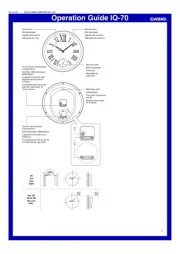
18 Juni 2025
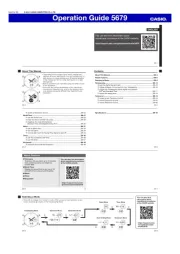
17 Juni 2025
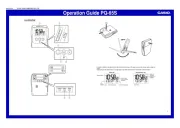
17 Juni 2025
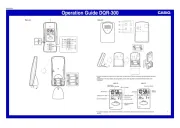
16 Juni 2025

16 Juni 2025
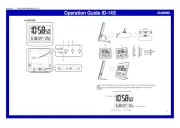
16 Juni 2025
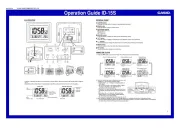
16 Juni 2025
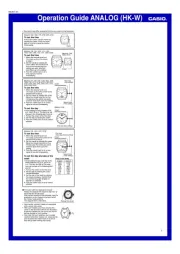
16 Juni 2025
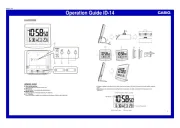
16 Juni 2025
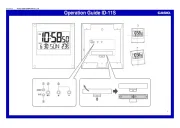
16 Juni 2025
Handleiding Horloge
- Fromanteel
- Dakota
- Slazenger
- KRAEK
- Bering
- Tudor
- TomTom
- Freestyle
- Victorinox
- Davis
- Hugo Boss
- Auriol
- Timex
- Fitbit
- Hamilton
Nieuwste handleidingen voor Horloge

5 Juli 2025

5 Juli 2025

4 Juli 2025

4 Juli 2025

4 Juli 2025

4 Juli 2025

4 Juli 2025

2 Juli 2025
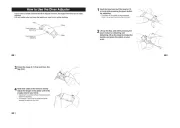
1 Juli 2025

21 Juni 2025